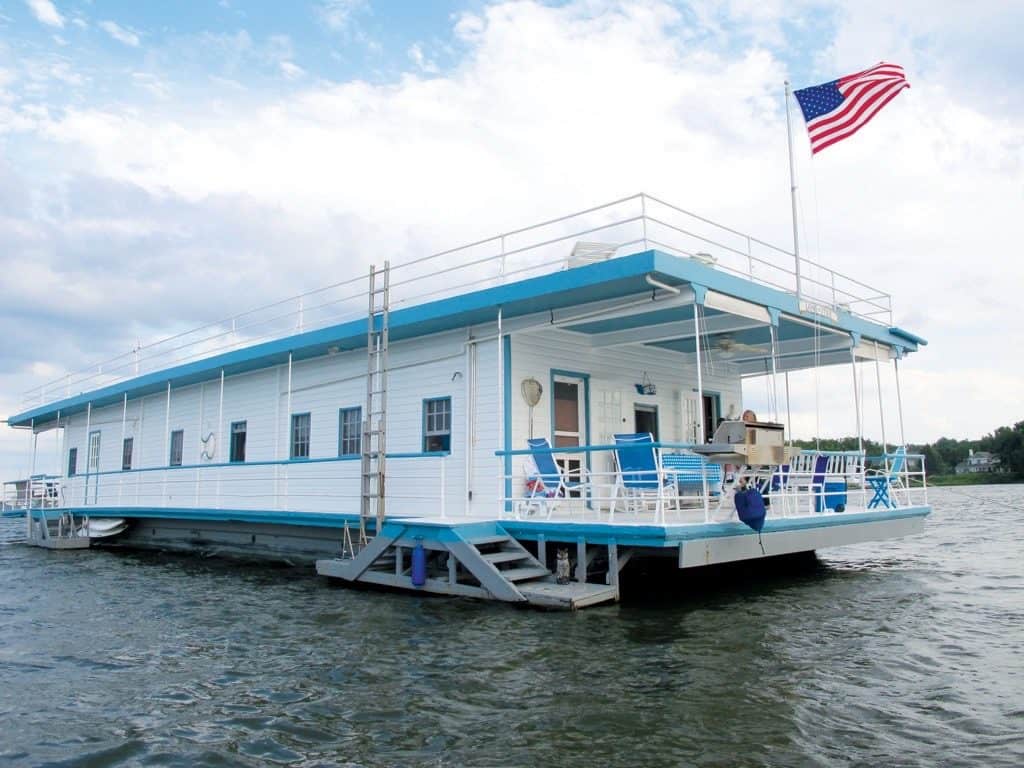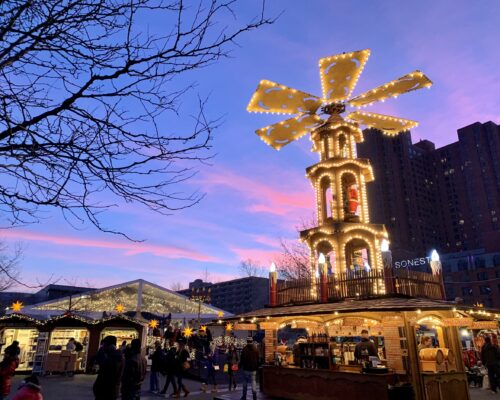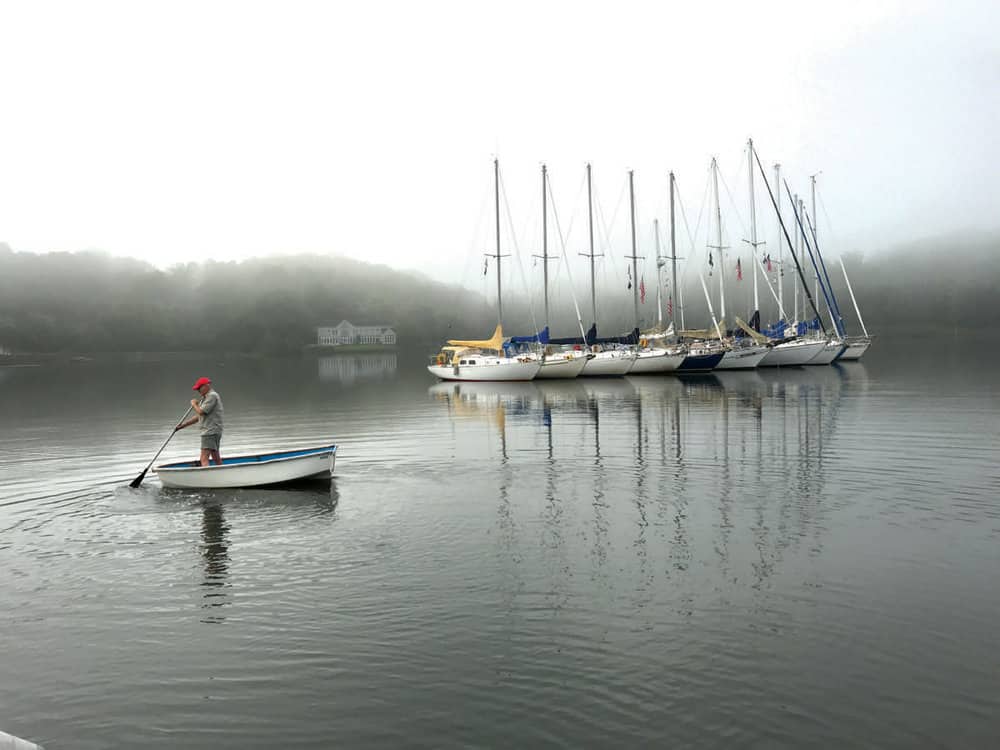A family anchored by their floating summer home
Story and photos by Molly Englund
Every summer in the harbor of Gibson Island, where the Magothy River ends as it curls back on itself, a houseboat appears. It’s not at a dock but anchored toward the back of the harbor, well offshore and out of the way of the local boat traffic. The boat has been in that spot almost every summer since 1960. Or maybe since 1973—the answer depends on who in the family you ask.
The family is the Boykins, three generations of whom have made the yearly pilgrimage to their home on the water. Lone Star is a 90-year-old houseboat bought by Mr. and Mrs. Boykin in 1960 and currently owned by their children. This generation is now preparing the next one to take over. Their children, young adults all, are learning the ropes.
One of the siblings, Rebecca Boykin, known as Rebel, is a nurse who runs an operating room. She’s unpacking groceries in the small galley when I arrive after the sort trip out with the irrepressible Captain Denver Sanner, the Gibson Island harbormaster, in the community launch.
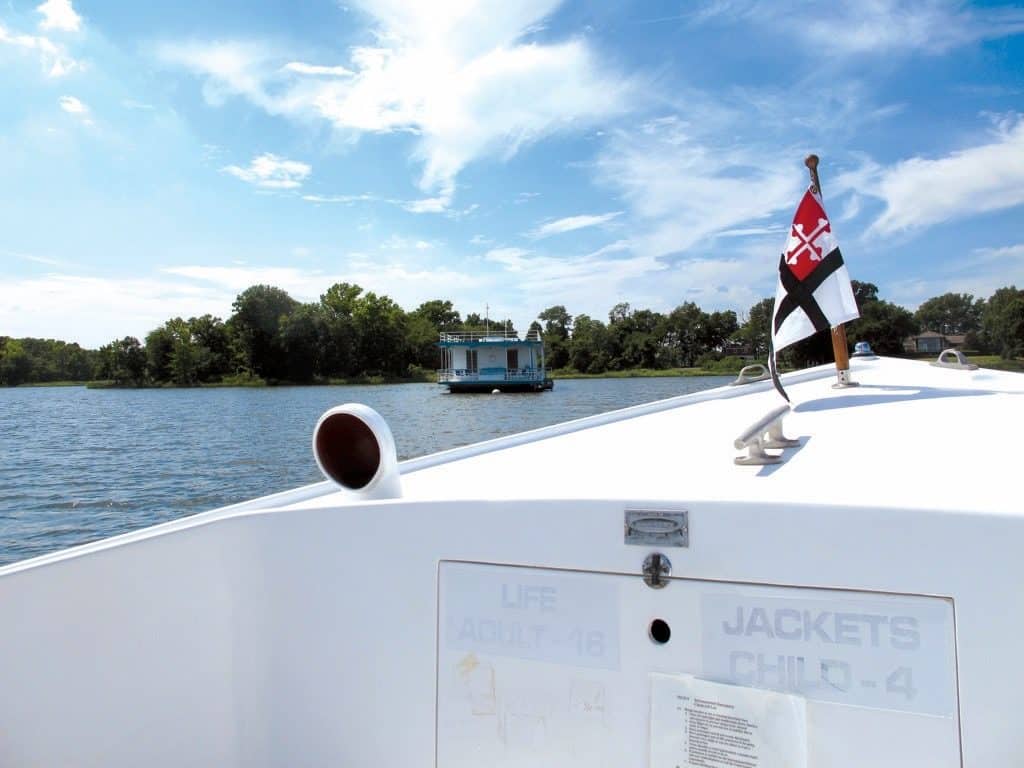
“You must be a Northerner,” Rebel says, since I get there a little early, which to houseboat people means I’m really early. Soon, Rebel’s daughter Tory, her niece, Charlotte Tracey, and Charlotte’s dad, John Tracey, arrive, either brought by Sanner’s son or in their own small boats. John’s wife and Rebel’s sister, Nina Tracey, will get there that night, after I’ve gone home. Most of the extended family lives in the Mid-Atlantic region, and in the summer, many of them come to the houseboat every weekend.
Gibson Island is a private island, and this is a private houseboat. And yet the Lone Star is so much part of the landscape, such a community anchor, that visitors and neighbors treat it as a kind of public landmark.
The houseboat was built in 1929 for George Mackubin, of George Mackubin & Co. The company has had several name changes as partners left and new ones joined. You might know it as Legg Mason. In the early 1900s, Mackubin used his young firm to invest heavily in the Houston Oil Company, which built his group into the large investment firm it is today, with a 100-year presence in downtown Baltimore. In a nod to the state that made his wealth, Mackubin named his new boat the Lone Star.
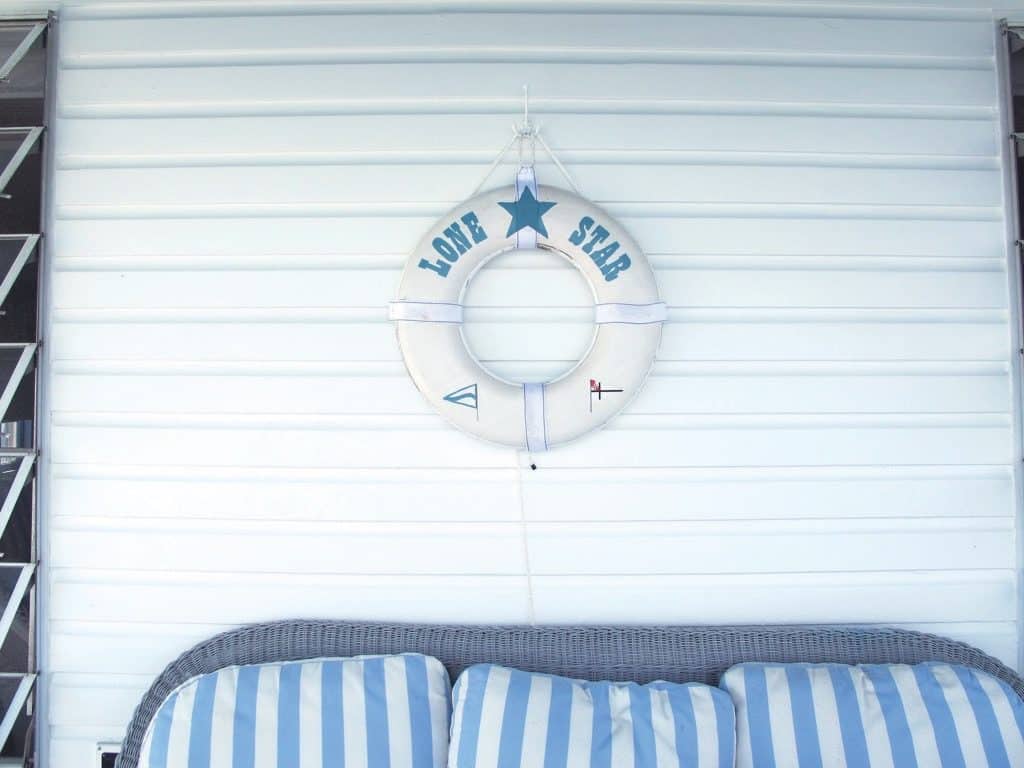
Mackubin, an Ellicott City native whose mother descended from Martha Washington, was a founding member of Gibson Island. He came to the island especially for duck season, staying warm at the potbellied stove in the boat’s living room. Early on, he anchored the boat in the harbor but moved it up the river to Redhouse Cove after a fight with the Gibson Island Club. The boat’s permanent mooring is still there, where it spends its winters and its storms.
As Rebel tells it, her parents were spending a fair amount of time on Gibson Island by the late 1950s. Her father, who ran a costume jewelry business, loved to sail. Her mother was a landlubber from Michigan. “Every summer we would have to re-teach her how to do a bowline,” says Rebel. But her parents were smitten with Mackubin’s houseboat and told him they were interested if he were ever to sell. Which is what, by 1960, Mackubin wanted to do, asking more money for it than the Boykins could afford. The next potential buyer wanted to turn it into a riverboat casino, but Mackubin insisted it go to a family. He called the Boykins to see if they could make a deal. When they got off the phone, Mrs. Boykin told her husband, “Mortgage everything!”
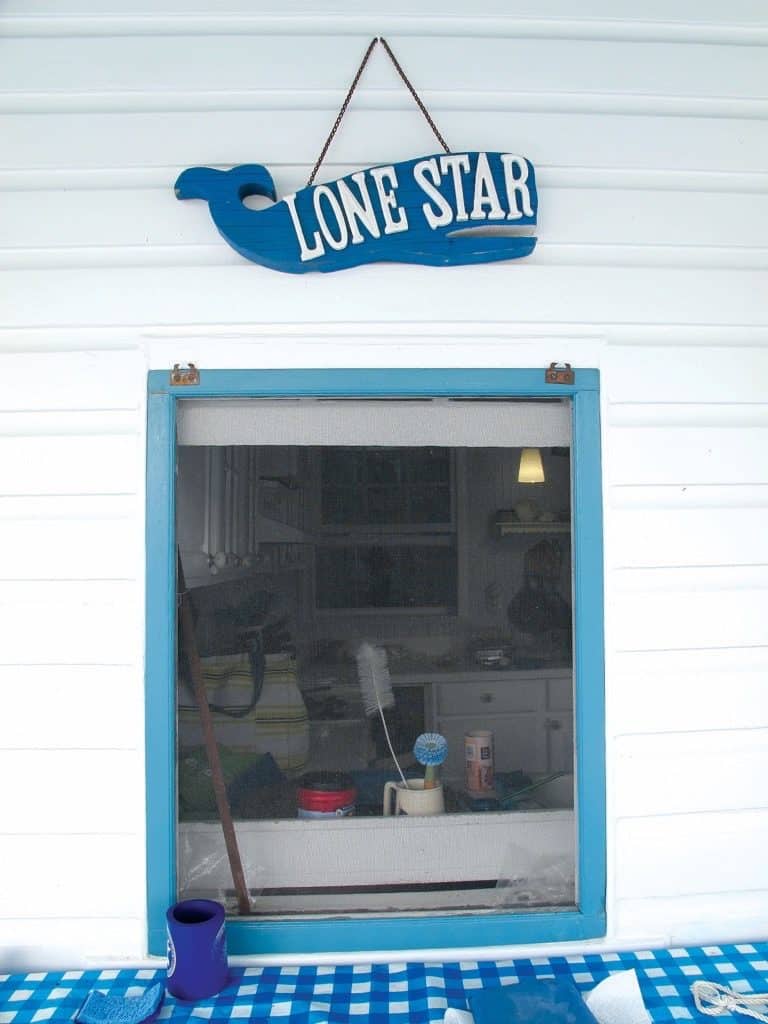
Since then, the Lone Star has shaped the family, as the kids grew up there and brought their own kids to do the same. The young cousins, in their 20s today, are more like siblings. To them, summer was the Lone Star—sleeping on the roof, jumping from the roof, having island kids over, playing in sports camps at the club. “It was freedom,” says Charlotte.
There were rules, of course. You couldn’t run on the deck. You had to get back to the houseboat before dark. You could sleep on the roof, but you wake up early or you wake up with a sunburn. (The kids remember lying out like starfish while their grandmother slathered them with aloe vera.) You had to wear a lifejacket on deck until you passed the swimming test, which was a lap around the boat. It’s harder than it seems. The 85-foot-by-46-foot boat moves on its 150-foot chain, which is attached to railroad car axles that anchor it in the mud. It can be a long test.
The kids had a lot of freedom, as long as they accepted the responsibility. And they are starting to accept the responsibility for the houseboat itself, of which there is no small amount. After all, the wooden Lone Star has been sitting in water for 90 years.
For example: In 1974, the houseboat sank. It was winter, and the bilge pump failed. Because the water’s only 10 feet deep here, the top stuck out. Mr. Boykin used huge balloons to float the boat while pumping water out.
The boat was salvageable, unlike much of what was inside it. The furniture was ruined, including an old player piano. John believes this is when the Boykins moved the boat to its current mooring. Rebel thinks they moved it when they bought it. The family also took the chance to renovate the boat and remove the engine. As John puts it, “It’s a boat, and yet it’s not a boat.”
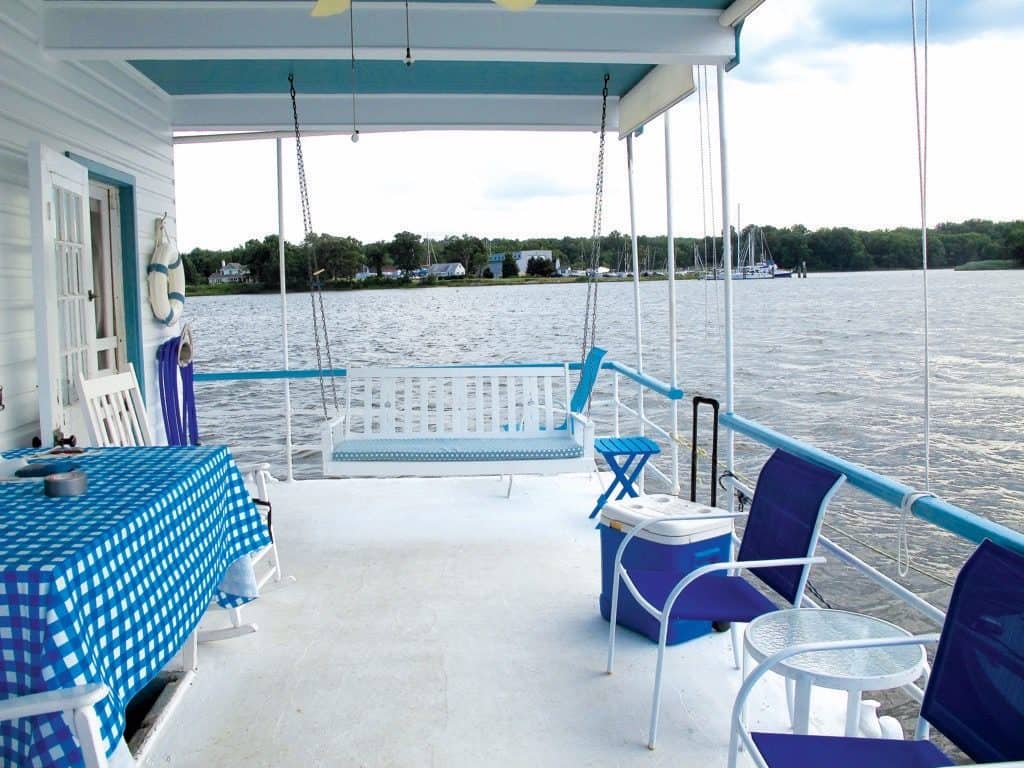
Today, the Lone Star is painted white, and it’s homey inside with beachy trinkets. Anyone is allowed to add whatever they like, as long as they only use blue accents, which helps deter arguments. A cupola brightens a long narrow hallway that’s flanked by five bedrooms. There’s a living room one on end and a dining room and galley on the other. The galley received the biggest makeover, with a propane-fueled refrigerator replacing an old icebox, and windows added to brighten the space. They added ceiling fans throughout the boat and put a grill on the deck. The player piano was replaced, and the replacement eventually tossed. Today, they rely on Bluetooth speakers and DVDs for entertainment.
If Boykin family getaways have an underlying first principle, it’s a devotion to making things fun. “I refer to Gibson Island in general as the aggressive pursuit of leisure,” says John, who works at PNC Capital Advisors and is also a trained pianist. When John and Nina’s son graduated from the Naval Academy in 2012, the family towed the houseboat to Annapolis for a week, using three smaller boats. It took four hours to get to Spa Creek, where it sloshed around from all the local traffic. The Boykins, Traceys, and friends piled into sleeping bags at night. The houseboat became a regular stop for the water taxi.
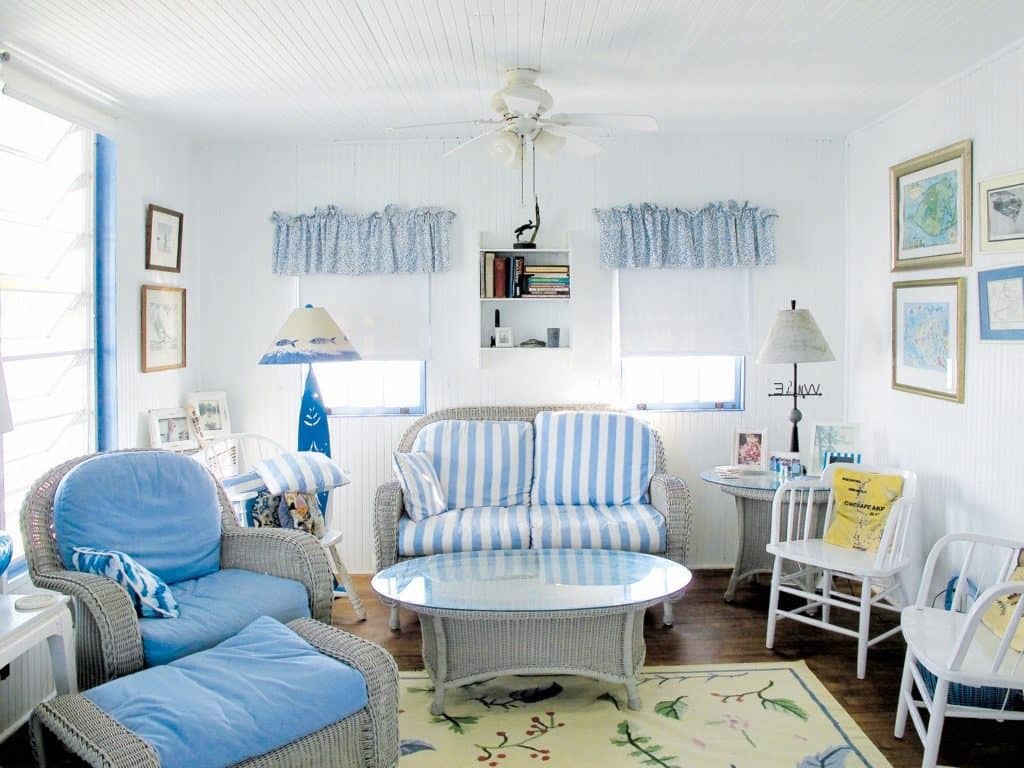
Back in Gibson Island Harbor the family goes crabbing and windsurfing. They like to throw big parties—the houseboat cocktail is a rum and tonic, served to guests with a napkin reading “What happens on the Houseboat Stays on the Houseboat!” The trick to having fun once you’re out on the water is to have a kind of fatalism. You make do with what you have. One of their favorite activities is storm watching.
The forecast is for stormy weather next day, and Charlotte’s excited to sit on the stern, where it’s dry, and watch it with her boyfriend, who hasn’t experienced a houseboat storm yet. “It’s a safe harbor but it’s so exciting,” she says. When the cousins were kids, their parents made a big show of telling them to batten down the hatches and get ready. “I had adrenaline when the storm rolled in, and then it’s just calm. Just calm when it is here, finally.”
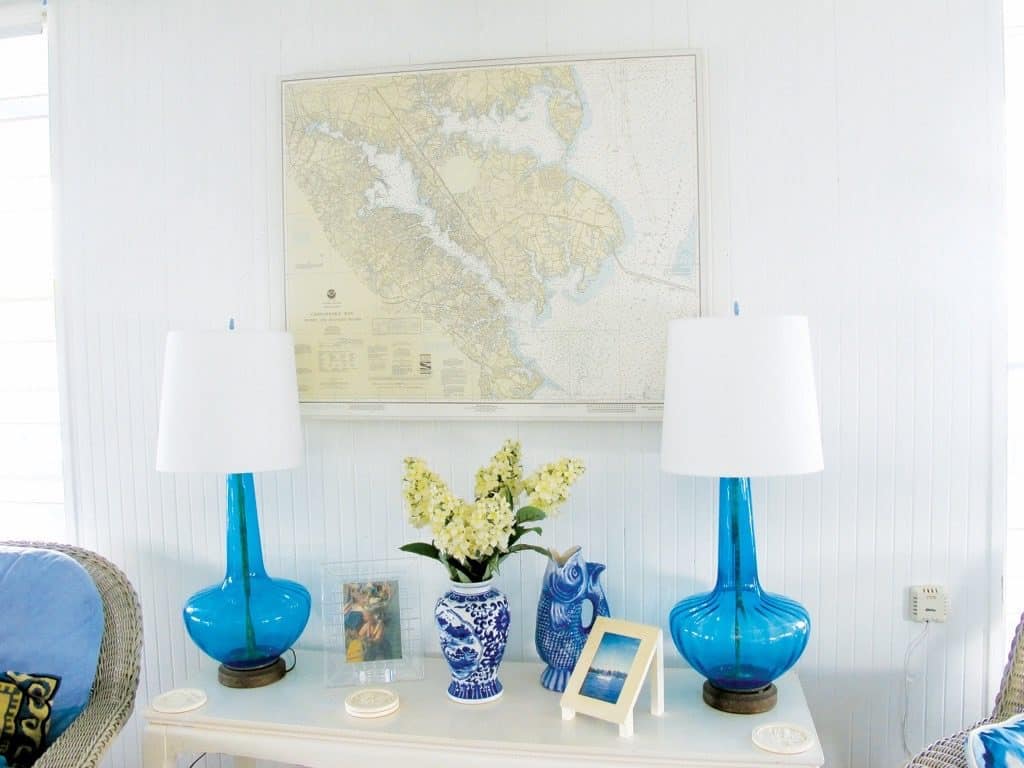
“Make do with what you have” is their attitude toward most things onboard. Grocery lists, especially, are planned extensively on land. They have a group text thread devoted to it. The family members consider themselves conservationists first, and have a septic system, LED lighting, and solar panels. They have AC, but they don’t use it except on the stillest, hottest nights. (There can be a surprising lack of breeze on the houseboat.) They collect rainwater for showers, which are limited to five minutes.
“If you even take a shower,” says Rebel. If you do, you turn off the water while you soap up. The women shave their legs on deck. “We’ve lost a lot of soap that way,” she says. They’ve learned that Dove sinks and Ivory floats.
“You make it fun,” Rebel says.
That sense of personal responsibility also extends to when something goes wrong. Be prepared, and for everything else, figure it out. The family is generally very prepared. John, Nina, and Rebel are teaching the upkeep to their kids, most of whom passed their boating safety courses by the age of 12.
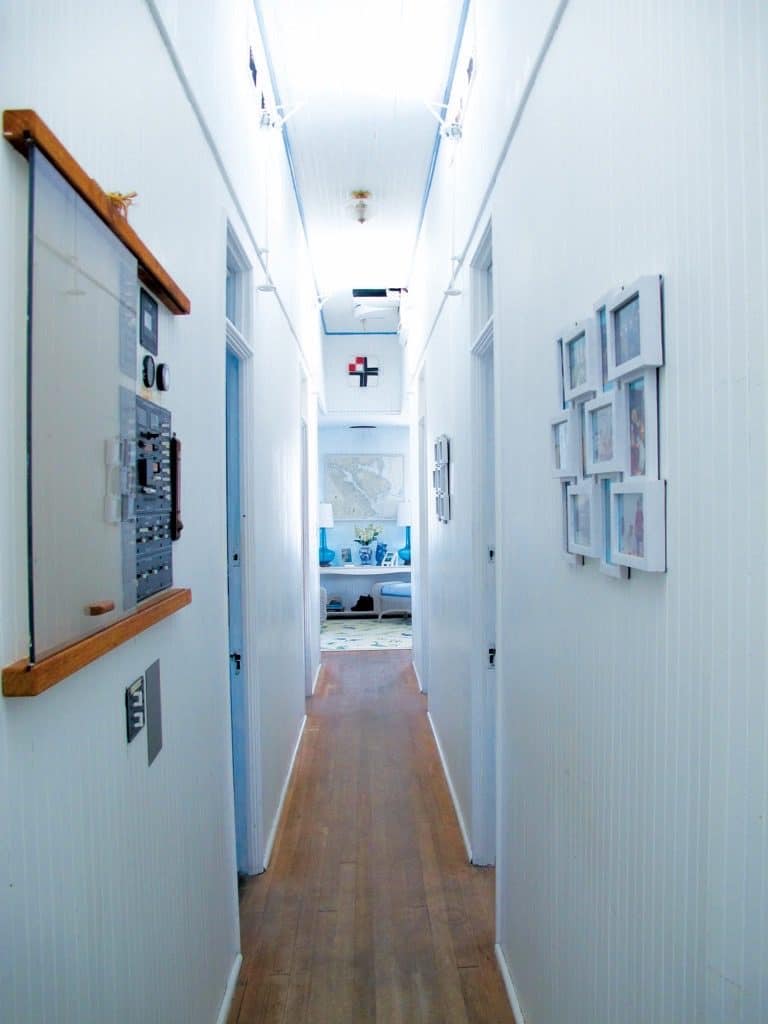
“There’s something every week that needs to be repaired,” John says. They must check that there is enough oil in the generator, that the bilge pump is working, and that propane has been loaded up. Bubblers stay running in the winter to keep the water from freezing around the boat. The Lone Star needs to be painted every couple of years. Basic maintenance is a big job, since the boat doesn’t come out of the water very often. Mr. Boykin kept a diary full of notes on how to take care of it.
The Lone Star, this summer home, this boat-but-not-a-boat, is part of the community and part of the island. Locals cruise by in their boats, and shout over the engine noise, passing tall tales to each other about the houseboat. I think they don’t realize how their voices carry over the water. It’s inevitable that the Lone Star would develop legends around it, as it’s been pulled to its harbor mooring each summer and then taken back to the cove each fall for half a century.
If there’s one true thing the houseboat has taught the Boykins and their children, it’s about appreciating everything that surrounds it.
“My mom would be, ‘Look at how beautiful it is. Look at that heron over there,’” Rebel says. “She was always pointing out the beauty of the sunrise or the sunset and making sure we paid attention to it.” Rebel remembers sleeping on the roof one night and seeing 14 falling stars.
“We all have an appreciation for nature because of this boat,” John says. There are ospreys and a pair of bald eagles. Deer and ducks and geese. Efforts to clean up the Bay have brought otters back, too. The boat forces you to live differently, to experience differently. Every morning, your perspective is different, although that’s mostly because the boat swings around. It can be disorienting, and that can be a good thing.”
Tory and Charlotte find that returning to the same place every year cements their memories. The boat is part of who they are, the past still with them, the present all they have. They are moored in their selves, and, always, in the family.

